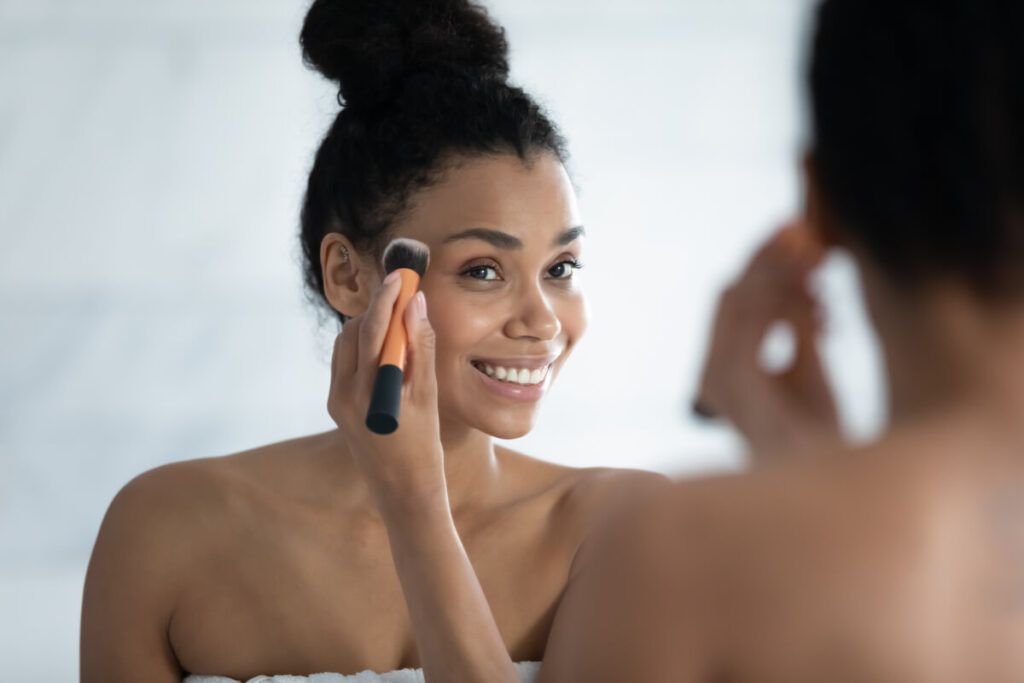Refer a friend, and both you and the person you refer will get $50 off your visit($250 minimum purchase). Learn more!
PRF Gel is here! Smooth fine lines and achieve subtle volume with natural filler. Learn more!

For some people, having perfect facial symmetry is a measurement of beauty and attractiveness. However, it’s not easy to achieve a symmetrical appearance because uneven facial features are quite common, especially around the eye area. While they usually go unnoticed, some people look for treatments like Botox to fix the severely uneven eyes.
So how does a Botox injection make the eyes look symmetrical? Most of the time, the position of a person’s eyebrows can cause the eyes to look uneven. Botox is injected around the brows so that the muscle underneath becomes relaxed, making the eyes look balanced.
Botox treatment is known as an anti-aging procedure that removes fine lines and wrinkles by relaxing the facial nerve and muscle in the treatment area. According to the American Society of Plastic Surgeons, Botox topped the list of cosmetic minimally-invasive treatments in 2020 with 4,401,536 procedures performed in the US alone.
But aside from reducing the appearance of forehead lines and other dynamic wrinkles, Botox is also a known treatment for eye conditions like strabismus (crossed eyes) and amblyopia (lazy eye). It’s also used for fixing brow and eyelid asymmetry to enhance a person’s appearance. Before trying out Botox for achieving symmetrical eyes, here are a few things to know first:

Knowing about the true reason for eye asymmetry helps clients and providers find the best treatment for a more balanced appearance. Although eye asymmetry is mostly a cosmetic concern, some people might have a medical condition that results in the eyelid or brow asymmetry. In such cases, it’s better to treat the condition first so that the client has a better facial symmetry for longer.
Here are some of the possible causes of uneven eyes and their symptoms:
This condition causes the eye to sink because of the changes in the space behind one it. Enophthalmos is usually caused by an accident or a medical condition that affects the cavity behind the eyes or the sinus. Patients might also experience enophthalmos suddenly or gradually, but they’ll feel facial pain, sinus issues, or a pulling sensation under the affected eye first.
Bell’s Palsy is a kind of unexplainable facial paralysis or weakness that affects one side of the face. Botox helps treat this condition by preventing the facial muscles from contracting. Another effective treatment for Bell’s Palsy is a facial exercise designed to relieve tension and increase muscle strength in the affected areas.
Ptosis (or droopy eyelid) occurs when the levator muscle connected to the eyelid becomes detached, causing the upper eyelid to droop over the eye. It’s a condition that might be present at birth or acquired later, but ptosis is more common among older people. Eyelid ptosis is usually caused by aging, improperly placed Botox, or a neurological condition like stroke and tumor.
A drooping eyelid makes the eyes look asymmetrical because one eye is lower than the other. People use Botox cosmetic or ptosis surgery to correct the upper eyelid ptosis if it starts interfering with their vision. Some clients also go through upper eyelid surgery for cosmetic reasons.
Perfectly symmetrical facial features are extremely rare. Most people have some degree of facial asymmetry in their eyes, nose, and other features that are based on their gender, age, and ethnicity. Asymmetrical features are considered normal, but some people choose to undergo cosmetic surgery and different non-invasive treatments to fix them.
One of the most common causes of natural facial asymmetry is aging. As people age, the soft tissue around different facial features loses elasticity and starts sagging. The body also produces less collagen and elastin -- the two important proteins that keep the skin firm, plump, and elastic.
Botox injections work by relaxing the muscles underneath the skin, effectively lifting the eyebrows and the droopy eyelid in the area. It works differently from a dermal filler because it doesn’t restore the lost facial volume. Botox is the best option between the two treatments because the levator muscle needs to be “relaxed” and not “filled” for better facial symmetry.
Certain cases of asymmetrical eyes caused by uneven, low, or droopy brows are fixed by Botox. The Botox cosmetic is injected into the lower forehead and the outer tail of the affected eyebrow to relax the facial muscles and lift the upper eyelid. This makes the eyes look more awake and open.
A Botox brow lift procedure typically needs about 20-30 units of Botox to achieve optimal results. However, there’s a chance that the plastic surgeon applies too much neurotoxin and over-corrects the area, leading to awkward-looking results. Make sure to find an experienced cosmetic expert to perform the treatment and ensure your comfort and safety at all times.
Botox is only effective for cases of mild to moderate facial asymmetry. If the brow droop or excess eyelid skin is severe, the client might need to undergo a surgical procedure to correct their facial anatomy.
It’s also important to determine the true cause of the eyelid droop. If the uneven eyes are caused by an underlying medical condition, getting the right treatment might restore the natural appearance of the eyes.

While Botox is a safe and effective treatment for asymmetrical eyes, it might not be the best procedure for everyone. Here are other treatments for better facial symmetry that might work for you:
Want to enhance facial symmetry without going through surgery? Evolve Med Spa is a trusted medical spa that specializes in different minimally invasive treatments to correct facial problems like eye asymmetry. Experience customized treatments from a team of highly skilled medical and cosmetic experts now by booking a consultation with us.